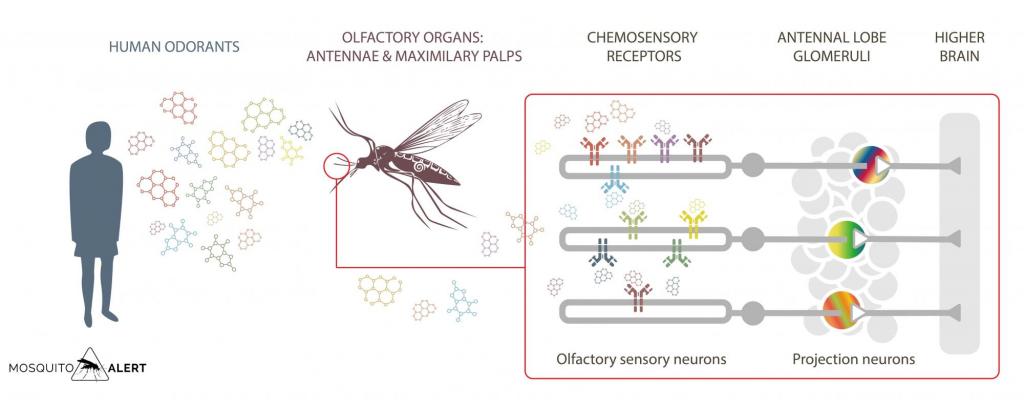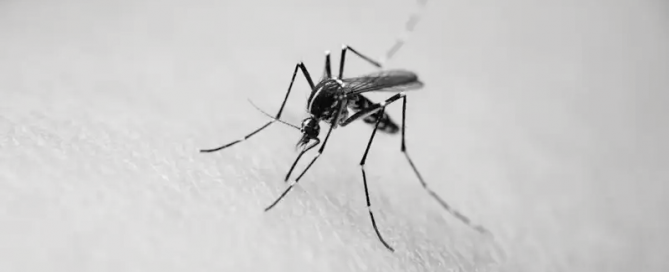Female mosquitoes rely on the complex cocktail of scents emitted by humans and other animals to detect them and feed on their blood. They need it to nourish their eggs. Detecting their prey is essential for their reproduction. Insects capture odors through olfactory neurons located mainly in their antennae. Their antennae, therefore, act as noses, detect odours, decode them and transmit the information to the brain.
Experiments carried out in recent years have shown that the yellow fever mosquito (Aedes aegypti) has a special predilection for human odours. A new experiment has used the CRISPR gene-editing technique to deactivate human odor receptors in the olfactory neurons of the antennae of yellow fever mosquitoes. The result obtained has been something totally unexpected.
The researchers hoped that this would prevent detection of human scent, and thus people might be “invisible” to the altered modified mosquitoes, but expectations were not met. In fact, by measuring their neural activity when exposed to human odours, they found that the modified insects continued to detect the odour.
The multiple “noses” of mosquitoes
The authors suspect that odors activate other receptors on olfactory neurons that have not previously been detected. In fact, by analyzing cellular activity using RNA analysis, they discovered that a single neuron could use multiple types of receptors, and that the human odor activated other receptors when the known ones had been deactivated. Something similar has been observed in the case of the fruit fly (Drosophila melagonaster), a complexity of neurons involved in smell that is changing the dogma of what was known about the olfactory system (Fig. 1).

Fig. 1. Diagram of how yellow fever mosquitoes encode olfactory information. The new model proposed after the experiments suggests that mosquitoes have complex sensitive elements on their antennae made up of different neurons, each of which would have receptors specialized in detecting the presence of different human odor substances. The information received and encoded by these neurons would travel to the antennal lobe glomeruli where the information would begin to be processed before being sent to the higher brain to coordinate the response to the stimulus. Source: Mosquito Alert CC-BY, scheme modified from an original by Herre et al. 2022. Cell 185: 3104-3123.
The study has revealed that mosquitoes are even better than previously thought at detecting human odours, and that they have “alternative systems” that allow if one of the receptors suffers a mutation, the animal can continue to use other receptors to achieve something as essential as feeding on blood and reproducing. The work also highlights that preventing mosquito bites and the spread of disease through genetic editing of mosquitoes is very complicated, and that more resources should be invested in creating more efficient traps and more effective repellents. Studying contact rates and the factors that determine them is the objective of the project funded by the European Research Council (ERC), Human-Mosquito Interaction Project (h-mip) coordinated by the co-director of Mosquito Alert John Palmer, in which UPF and CEAB-CSIC participate.
References
Herre M, Goldman OV, Lu TC, Caballero-Vidal G, Qi Y, Gilbert ZN, Gong Z, Morita T, Rahiel S, Ghaninia M, Ignell R, Matthews BJ, Li H, Vosshall LB, Younger MA. 2022. Non-canonical odor coding in the mosquito. Cell 185: 3104-3123
Task D, Lin CC, Vulpe A, Affix A, Ballou S, Brbic M, Schlegel P, Raji J, Jefferis G, Li H, Menuz K, Potter CJ. 2022. Chemoreceptors co-expression in Drosophila melanogaster olfactory neurons. eLife doi.org/10.7554/eLife.72599




